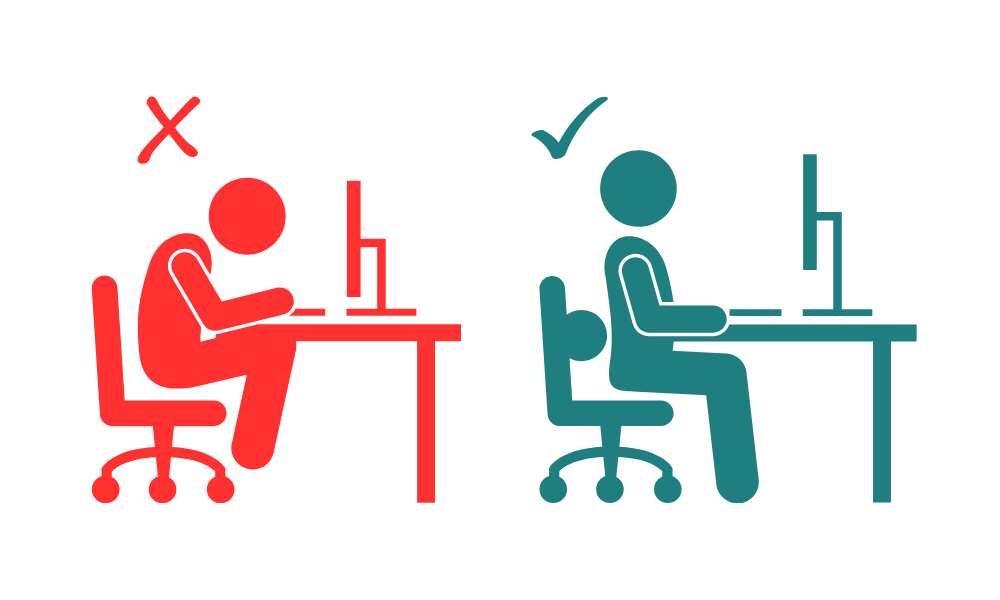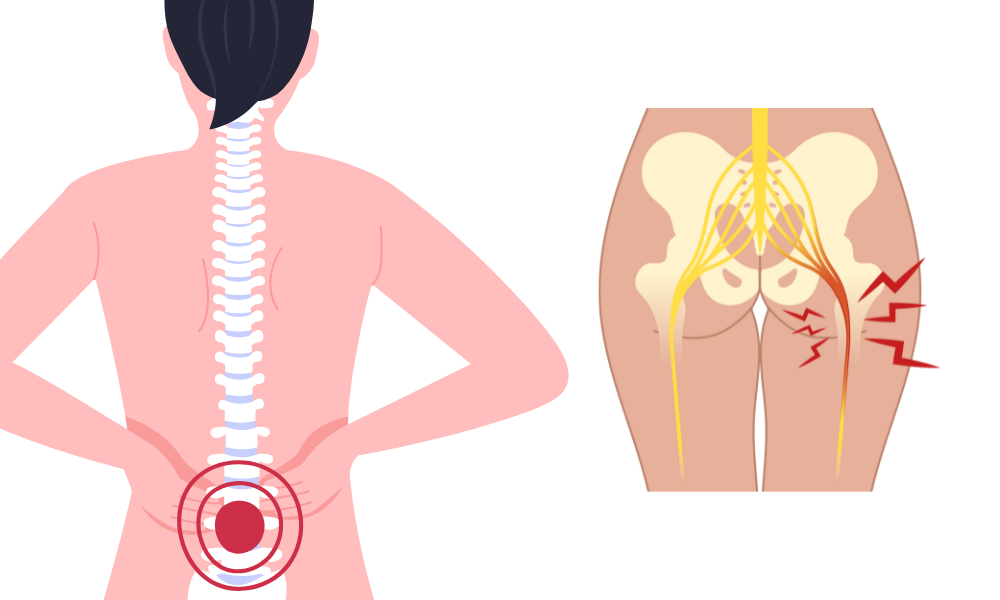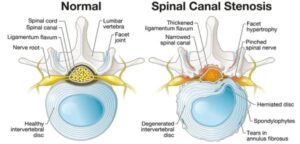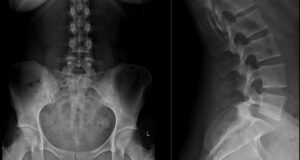Sciatica is a painful condition that affects millions of people worldwide. It refers to the compression or irritation of the sciatic nerve, which is the longest nerve in the human body. The pain associated with sciatica can be debilitating, making it difficult to perform daily activities comfortably.
In this blog post, we will explore the common causes of sciatica and discuss effective management strategies to alleviate the symptoms.
Common causes of sciatica
Vertebral subluxations
One of the primary causes of sciatica is vertebral subluxations, which refer to misalignments or partial dislocations of the vertebrae in the spine. These subluxations can impinge upon the sciatic nerve roots, leading to pain, numbness, and tingling sensations. Chiropractors specialise in detecting and correcting these subluxations through precise adjustments, aiming to alleviate the pressure on the affected nerves.
Herniated discs
Disc herniation is another prevalent cause of sciatica. When the outer layer of an intervertebral disc weakens or ruptures, the inner gel-like substance can protrude and press against the nearby nerves, including the sciatic nerve. Chiropractors employ various techniques such as spinal decompression, traction, and gentle adjustments to alleviate the pressure on the affected disc, facilitating its healing process.

Spinal stenosis
Spinal stenosis occurs when the spinal canal narrows, causing pressure on the nerves, including the sciatic nerve. This condition is often associated with the aging process, as the spinal structures gradually degenerate over time. People with spinal stenosis may experience pain and discomfort in the lower back, buttocks, and legs, which worsens with activities like walking or standing for prolonged periods.
Sacroiliac joint dysfunction
The sacroiliac (SI) joints, located between the sacrum and the pelvis, play a crucial role in transferring forces between the upper body and the legs. Dysfunction or misalignment in these joints can result in sciatic nerve irritation. Chiropractic care focuses on restoring proper alignment and mobility to the SI joints through specific adjustments, thereby relieving the pressure on the sciatic nerve and promoting healing.
Lifestyle factors and posture
Lifestyle factors and poor posture can exacerbate sciatica symptoms. Sedentary lifestyles, prolonged sitting, and improper lifting techniques can contribute to spinal misalignments and muscle imbalances, aggravating sciatic nerve compression. Chiropractors educate patients about ergonomics, proper posture, and specific exercises to strengthen core muscles, promoting spinal stability and reducing the risk of sciatica recurrence.

Piriformis syndrome
The piriformis muscle, located in the buttock region, plays a crucial role in hip rotation. In some individuals, the sciatic nerve runs through or beneath the piriformis muscle. When this muscle becomes tight or spasms, it can compress the sciatic nerve, resulting in sciatica symptoms. Activities like sitting for long periods, overuse of the muscle, or trauma can contribute to the development of piriformis syndrome.
Lumbar spinal injuries
Injuries to the lumbar spine, such as fractures, dislocations, or sprains, can lead to sciatica. These injuries may occur due to accidents, falls, or sports-related trauma. The damaged structures in the lower back can impinge upon the sciatic nerve, causing pain, weakness, and limited mobility.
Degenerative disc disease
With age, the intervertebral discs in the spine naturally degenerate and lose their elasticity and cushioning properties. This degeneration can lead to bulging or herniated discs, as mentioned earlier. The loss of disc height and stability can cause the vertebrae to shift, putting pressure on the sciatic nerve roots, resulting in sciatica symptoms.
Effective treatment and management strategies for sciatica
Chiropractic adjustments
Chiropractic adjustments, also known as spinal manipulations, are at the core of chiropractic care. These gentle, targeted techniques aim to realign the spine, release pressure on the nerves, and restore proper functioning. Chiropractors use their hands or specialised instruments to deliver precise adjustments tailored to each patient’s unique condition, providing relief from sciatica symptoms.
Rehabilitation exercises
Chiropractors prescribe customised rehabilitation exercises to patients suffering from sciatica. These exercises aim to strengthen the supportive muscles around the spine, improve flexibility, and correct imbalances. Rehabilitation programs may include stretching, core strengthening exercises, and specific movements that target the affected area, facilitating healing and preventing future episodes of sciatica.
Lifestyle Modifications
Chiropractors emphasise the importance of adopting healthy lifestyle habits to support spinal health. We educate patients about maintaining proper posture during daily activities, employing ergonomically designed furniture, and engaging in regular exercise to promote flexibility, strength, and overall well-being. Additionally, chiropractors offer guidance on weight management, nutrition, and stress reduction techniques to optimise healing and minimise sciatica-related discomfort.
Collaborative Care
Chiropractors often work in conjunction with other healthcare professionals to provide comprehensive care for sciatica patients. This collaborative approach may include referral to our myotherapy and massage therapists to enhance the effectiveness of treatment and promote holistic healing.
As chiropractors, our primary goal is to provide relief and facilitate the natural healing process for individuals suffering from sciatica. By addressing the root causes through precise adjustments, rehabilitation exercises, and lifestyle modifications, chiropractic care offers a drug-free, non-invasive approach to managing sciatica. If you’re experiencing sciatica symptoms, consult with one of our qualified chiropractors to embark on a personalised treatment journey towards regaining comfort and mobility.




